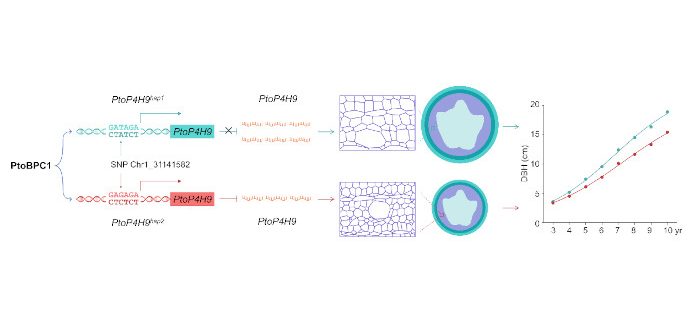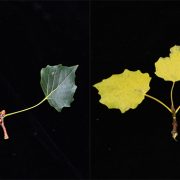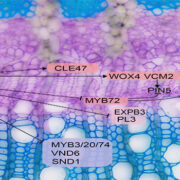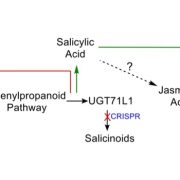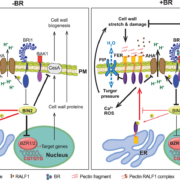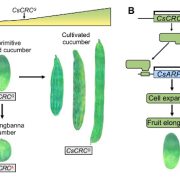A prolyl 4-hydroxylase gene contributes to stem growth in poplar
Xiao, Fang, Zhang, et al. identify a gene affecting stem growth in poplar.
Liang Xiao (Beijing University of Agriculture and Beijing Forestry University), Yuanyuan Fang (Beijing Forestry University), He Zhang (Peking University), and Deqiang Zhang (Beijing University of Agriculture and Beijing Forestry University)
https://doi.org/10.1093/plcell/koad212
Background: Forest trees are long-lived, woody perennials, making them dramatically different from Arabidopsis and other herbaceous annual model plants. Poplar (Populus) offers the opportunity to study biological questions pertinent to perennial stem growth. The annual cycle of perennial growth is synchronized with the seasons, based on periodic environmental fluctuations. Thus, perennial growth requires sophisticated regulatory mechanisms to initiate growth in the meristems and facilitate annual growth. While the genetic basis of stem growth has been elucidated, the dynamic genetic architecture of perennial stem growth has remained largely unknown.
Question: Which genes are involved in the regulation of stem growth during the long life span of trees?
Findings: Based on the diameter at breast height (DBH) measured over eight years, we modeled the growth trajectories from 303 natural accessions of Populus tomentosa and identified a causal gene PtoP4H9 responsible for natural variation of DBH. The allelic variants in PtoP4H9 promoter altered the expression of PtoP4H9 by affecting the binding affinities of the transcription factor PtoBPC1. Genetic analysis showed that PtoP4H9 increased the modification abundance of O-arabinosides and decreased the mechanical rigidity of cell wall to promote cell expansion and stem radial growth in Populus. More importantly, we found that PtoP4H9 underwent strong natural selection during local adaptation of Populus tomentosa.
Next steps: Additional efforts will concentrate on the candidate genes responsible for a particular growth stage such as juvenile to adult phase change and senescence phase. Clarifying candidate gene function will enable us to understand the inter-annual variability of perennial stem growth and help predict forest productivity.
Reference:
Liang Xiao, Yuanyuan Fang, He Zhang, Mingyang Quan, Jiaxuan Zhou, Peng Li, Dan Wang, Li Ji, Pär K Ingvarsson, Harry X. Wu, Yousry A. El-Kassaby, Qingzhang Du, and Deqiang Zhang (2023) Natural variation in the prolyl 4-hydroxylase gene PtoP4H9 contributes to perennial stem growth in Populus. https://doi.org/10.1093/plcell/koad212


